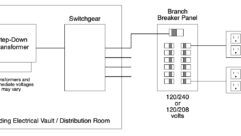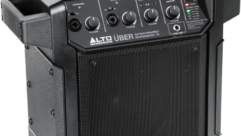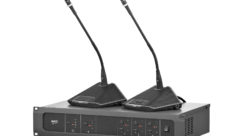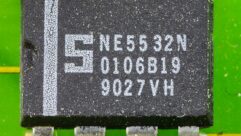
REGULATED POWER SUPPLIESConstant VoltageConstant CurrentConstant Voltage and Constant CurrentSIMPLE REGULATED SUPPLIESCOMPLEX POWER SUPPLIESCONCLUSION
THE LAST “CONTRACTOR’S TOOLBOX” (MAY 2001) discussed simple power supplies, that is, power supplies with no regulation, such that voltage drops as current increases. These supplies are fine for operating mechanical relays and unsophisticated power amplifiers, but they fall flat when operating today’s more complicated equipment.
A regulated power supply holds the output constant with variations in load, current or input voltage. Regulated supplies may be simple shunt or series regulators with 1% to 3% regulation or high-gain supplies with 0.001% regulation and 0.001% ripple. All regulated supplies have a reference element and a control element. The amount of electronics between the two elements determines the quality and regulation of the supply.
The reference element is the foundation of all voltage regulators. The output voltage or current of the regulated power supply is equal to, or a multiple of, the reference. Since any variation in the reference will cause the output to vary, the reference must be as stable as possible.
The control element makes the output constant. The regulator type is named after the control element, namely the series or shunt. The control element can be considered an electronic variable resistor that drops voltage either in series with the load or across the load (see Figure 1).
Regulated supplies are fed from a filtered DC supply, which may be as simple as a capacitor or as sophisticated as a pre-regulator. The smoother the input voltage is, the smoother the output will be. Types of regulated power supplies are seen in Figure 2. The capacitor C1 shown in this figure is used to smooth the output and reduce ripple of the unregulated input.
The comparator amplifier constantly monitors the output voltage. This reduces ripple because the reference voltage is smooth DC (which has no ripple), and the output ripple voltage of the regulated supply appears to the comparator like a varying load. Since the comparator output is the two signals’ difference, the regulator or pass transistor attempts to follow it, reducing ripple.
A constant-voltage regulated power supply is designed to keep the output voltage constant with changes in load current, line voltage or temperature. For a change in the load resistance, the output voltage remains constant while the output current changes by whatever amount is necessary. Its impedance curve is shown in Figure 3 (top).
An ideal constant-voltage power supply would have an output impedance of 0 ohms. For well-designed, voltage-regulated power supplies, the internal output impedance will range from 0.001 to 3 ohms for frequencies from DC to 1 MHz. The actual impedance is a function of the load and the type of equipment being fed by the supply.
A constant-current regulated power supply is designed to keep its output current constant, regardless of the changes in load impedance, line voltage or temperature. For a change in the load resistance, the output current remains constant while the output voltage changes. See Figure 3 (bottom).
A constant-voltage, constant-current regulated power supply acts as a constant-voltage source for large values of load resistance and as a constant-current source for small values of load resistance. An automatic crossover or transition between these two modes occurs at a crossover value of load resistance (Rc) if Rc=Vs/Is where Vs is the voltage-control setting, and Is is the current-control setting.
A simple supply (see Figure 4) consists of only the control element and the reference element. The zener diode is connected in series with the limiting resistor, R, and in parallel with the load. The zener diode current, Iz, is about 10% of the load current, IL. The value of the series resistance, R, is R1=(Vs-Vout)/(IL+IZ) where Vs is the voltage source, Vout is the output voltage, IL is the load current and IZ is the zener current.
The power dissipated in R1 is I2R where I is the current through the load plus the current through the zener diode. If the load current is completely removed, the current through the zener diode increases to the design-load current plus the design-zener current. For this reason, it is better always to have a load.
Zener diodes can be connected in series across the output of a DC supply to increase the regulated output voltage, provided the power-handling capabilities and the current-operating ranges are similar.
In a cascade shunt regulator (Figure 4, lower middle), the zener diode controls the base potential of transistor Q1, which functions as an emitter follower and circuit amplifier. This circuit is used where large current variations are encountered.
In a current-regulator circuit (Figure 4, bottom), the load current remains constant until the voltage drop across RL is as large as the voltage drop across R1.
Complex supplies include a pass element, a sampling element and a comparator element and may include a pre-regulator, current limiting, undervoltage and overvoltage protection, and remote sensing. The pass or control element is a transistor or parallel transistors connected in series with the output to control the flow of the output current.
The sampling element is the device that monitors the output voltage and translates it into a level comparable to the reference voltage. This could be as simple as a resistor voltage divider. Variations in the sampling voltage versus the reference voltage ultimately control the regulator output.
The comparator element compares the sampling element voltage with the reference voltage and provides gain for the detected error signal to command the control circuit. The pre-regulator adjusts the Vin to maintain approximately 3V across the pass element (see Figure 5). The regulator voltage is held relatively constant regardless of input or output conditions, reducing the power dissipated and the number of transistors required in the series regulator.
Current limiting is used to protect the pass transistor by limiting the transistor current to the safe operating range. The simplest current-limiting device is a resistor in series with the load. This, however, affects regulation by the IR drop across the resistor. To overcome this, the voltage drop across the small impedance series resistor R1 is sampled, as in Figure 6 (top). The output voltage remains constant up to a predetermined current, at which time the voltage decreases to limit the output current. A third current limiting is foldback current limiting, in which the load current actually decreases as the load continues to increase beyond Imax (Figure 6, bottom). This is used in high current supplies.
The current-limiting power supply on the left in Figure 6 is protected from instantaneous short circuits, but long-duration shorts can overheat Q2, leading to failure. The circuit on the right is modified to produce foldback by adding two voltage feedback resistors (R3 and R4). The control transistor Q1 emitter voltage depends on the power-supply output voltage as sampled by the R3/R4 voltage divider. If R1 senses a current overload, the drop across it decreases the output voltage and lowers the emitter voltage of Q1, turning Q1 on at reduced current through R1. This limits current flow through Q2. The foldback ratio can be adjusted by changing R3, R4, R1 or all three.
Overvoltage protection safeguards the load from voltage above the set value. This may be accomplished internally or as an add-on. A crowbar circuit is a typical overvoltage protector. The circuit monitors the output voltage of a power supply and instantly applies a short circuit across the output terminals when a preset overvoltage is reached. The crowbar is often a silicon controlled rectifier connected across the output terminals of the supply unit.
The load-wire size and voltage drop for regulated power supplies can be determined by Ohm’s law. Since regulated power supplies are designed to control the output at the power supply output terminals, the conductors used for the supply line must be considered as a part of the power supply load. Remote sensing makes the regulated supply control the voltage at the load rather than at the output of the power supply. Adding sensing wires between the remote sensing terminals of the power supply and the load terminals permits the supply to achieve its optimum regulation at the load terminals rather than at the power supply output terminals. In this manner, the power supply compensates for the IR drop in the line between the power supply and the load. The sensing circuit is high-impedance; therefore, the wire can be small, and the voltage drop is negligible.
Regulated power supplies are an important part of any audio or visual circuit, especially with today’s sophisticated equipment. Not only do they protect the equipment they are powering, they also reduce noise and improve stability and linearity.
Glen Ballou works with Innovative Communications and is author of The Handbook for Sound Engineers — The New Audio Cyclopedia.










